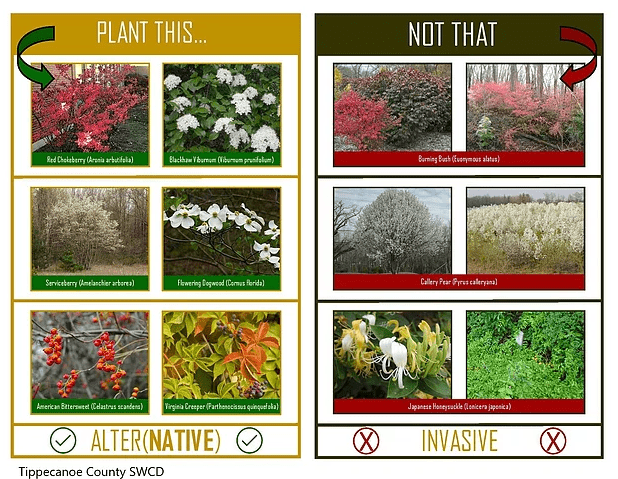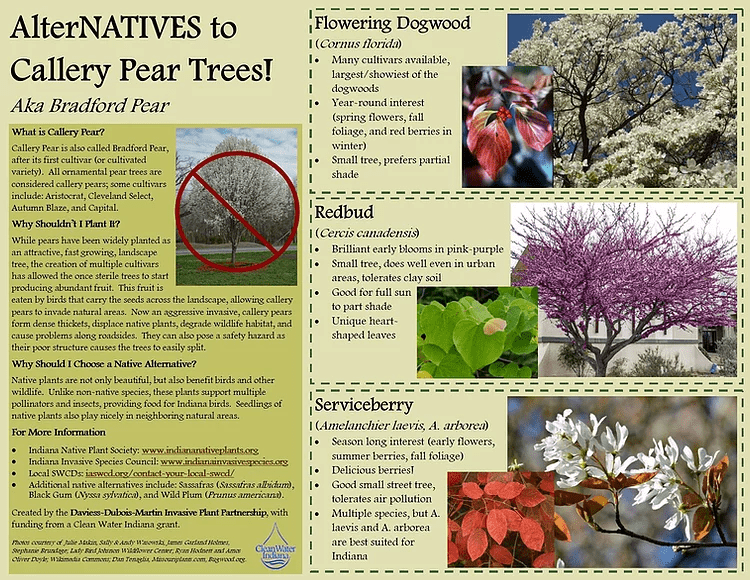An “invasive” plant is a non-native plant that infests natural areas and causes environmental or economic harm, or harm to human health. Invasive plants degrade and destroy thousands of acres of our natural plant communities in Indiana. Each year millions of dollars are spent to control them.
Invasive plants hurt wildlife by crowding out the plants our native animals need for food and cover. Most invasive shrubs and trees are little used by native insects. This reduces habitat for beneficial pollinators and predatory insects, as well as reducing the amount of food available for birds to feed their nestlings. Invasive plants can also decrease your ability to enjoy hunting, fishing, mushroom collecting, bird-watching, and many other recreational pursuits.
The following are the top invasive plants in Indiana.
- Garlic Mustard
- Purple Loosestrife
- Callery (Bradford) Pear
- Japanese Honeysuckle
- Multiflora Rose
- Asian Bush Honeysuckle
- Common and Glossy Buckthorn
- Burning Bush
- Japanese Barberry
- Autumn Olive
- Norway Maple
- Asian Bittersweet
- Wintercreeper
- Japanese Stiltgrass
- Chinese Maiden Grass
- Japanese and Giant Knotweed
- Tree of Heaven
- Princess Tree


For more information, visit the links below:
- Invasive Species – Plants (Indiana Department of Natural Resources)
- Identification and Control (Invasive.org)
- Tippecanoe Invasive Cooperative Taskforce (TICT)
- Tippecanoe Invasive Cooperative Taskforce (TICT) – Facebook
- Indiana Invasive Species Council
- Reporting Invasive Species (Eddmaps.org)
- Landscaping with Non-Invasive Plants (Indiana Native Plant Society)
